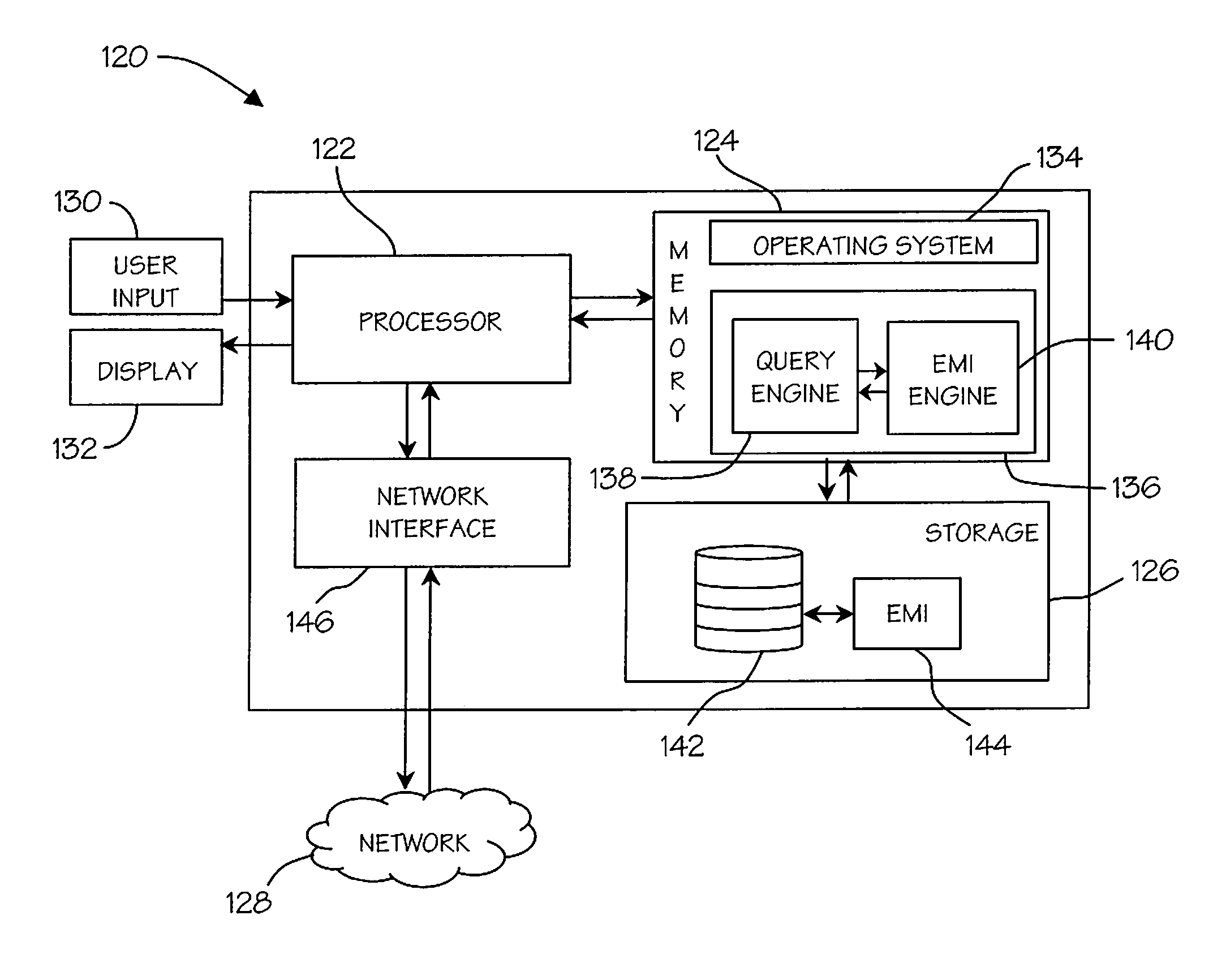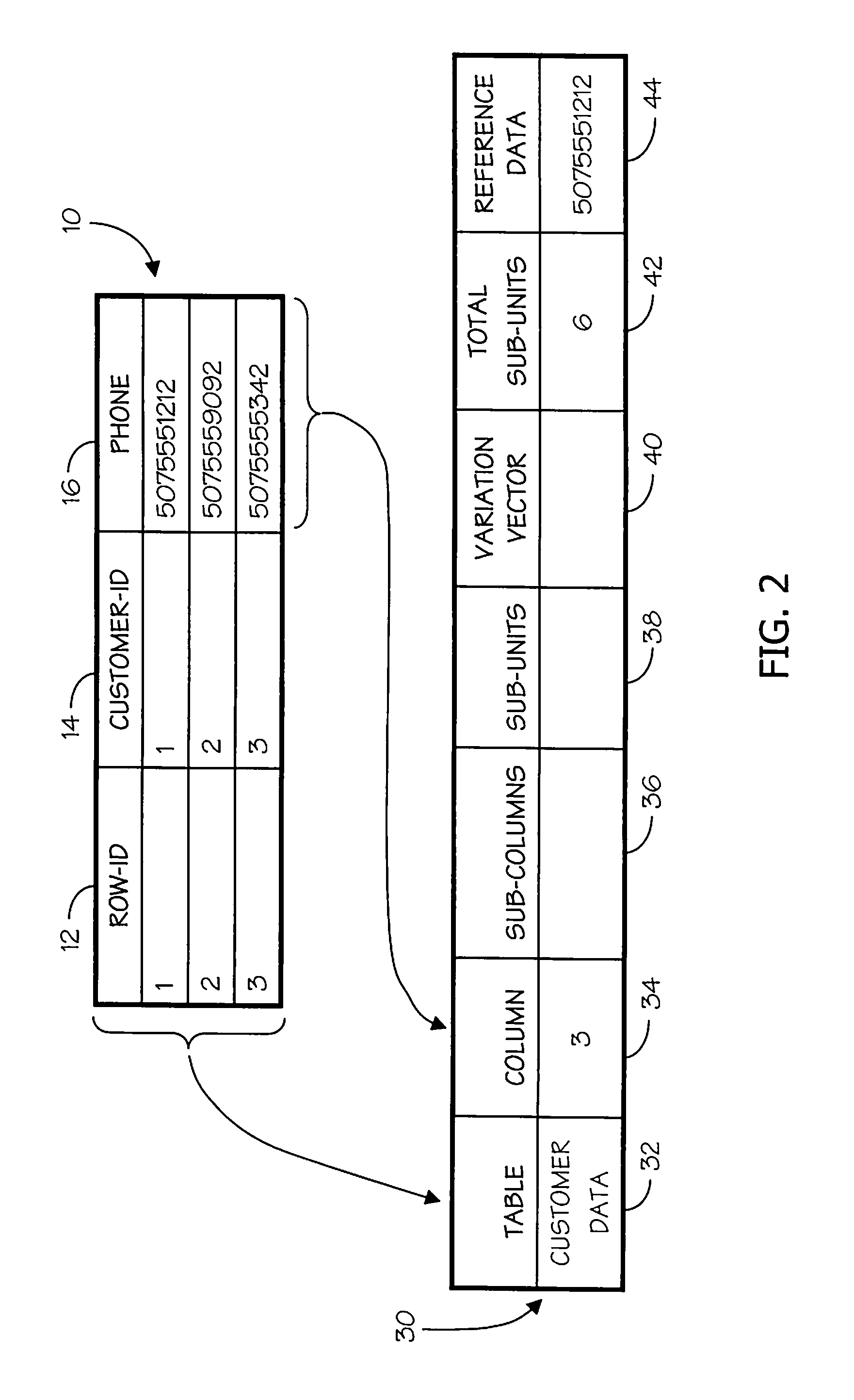Encoded matrix index
a matrix index and matrix technology, applied in the field of computer and data processing, can solve the problems of difficult mining of data, difficult storage and query of genomic sequence data, and inability to efficiently query such sequences, and achieve the effect of reducing the amount of information necessary to represent the sequences in the index and being easy to reconstructed
- Summary
- Abstract
- Description
- Claims
- Application Information
AI Technical Summary
Benefits of technology
Problems solved by technology
Method used
Image
Examples
Embodiment Construction
[0032]Embodiments of the invention generate and use an Encoded Matrix Index to address deficiencies in the art related to searching sequence type data stored in relational databases. An Encoded Matrix Index typically relies at least in part on reference values that store portions of sequence data that often represent the most commonly occurring values found in a particular type of sequence data in a column of a database table, combined with additional information that specifies the variation of specific sequences relative to those reference values.
[0033]Additional details regarding Encoded Matrix Indices will discussed in greater detail below; however, before discussing these additional details, a brief explanation of various other types of indices is provided by way of background. Query optimizers may create temporary objects or index objects as part of the optimization process to assist with complex and nested queries. These temporary objects may be optimized subsets of the overal...
PUM
 Login to View More
Login to View More Abstract
Description
Claims
Application Information
 Login to View More
Login to View More - R&D
- Intellectual Property
- Life Sciences
- Materials
- Tech Scout
- Unparalleled Data Quality
- Higher Quality Content
- 60% Fewer Hallucinations
Browse by: Latest US Patents, China's latest patents, Technical Efficacy Thesaurus, Application Domain, Technology Topic, Popular Technical Reports.
© 2025 PatSnap. All rights reserved.Legal|Privacy policy|Modern Slavery Act Transparency Statement|Sitemap|About US| Contact US: help@patsnap.com



